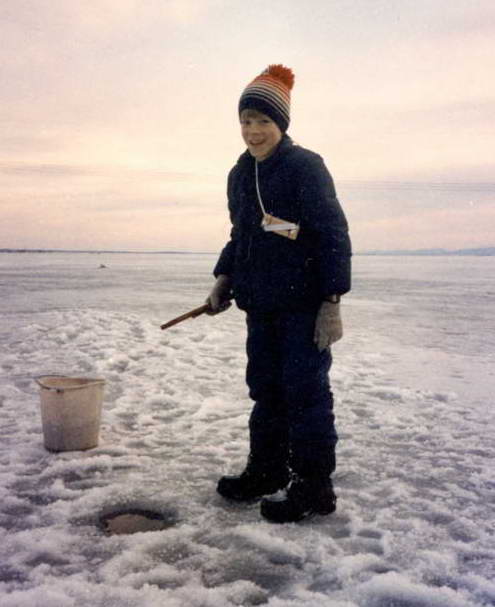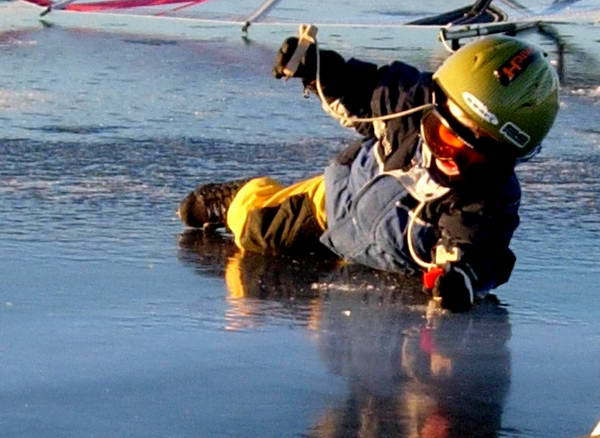Children and Ice
The risk profile of being on lake ice is similar to moderate mountain climbing. There is often real and unpredictable danger. Getting to the mountains usually requires that someone drive you there. In the north country, ice is often within walking distance.
Kids get on ice two ways: Adults bring them or they go on their own. If you are prepared to accept and manage these risks for you and the children in your care it can be a rewarding experience. It has been my personal practice and observation that children often get brought on the ice by parents (generally dads) who are trying to combine child care with recreational pursuits. If the ice is good and the kids are well supervised this can be OK. If it is typical ice, it is often less than great somewhere and may not be such a good place for kids.

The ice is not great (but not terrible either), he has ice claws, the water is about 4 feet deep and his dad is near by.
The second way kids come to ice is more insidious. Many people I know were attracted to ice as children. We had less than great judgment. Most kids are lucky, a few are not. As with many risks parents must address for children, you have two good choices: prevent them from having access to wild ice or educate and equip them. The obvious strategy is prevention early and then education. Being a good example is an important part of education.
One approach is that you and they always wear lifejackets when near or on water or ice. Try to get their friends parents to do the same thing. Not only will that reduce the risk of being on the ice when you are together it will make it less likely for them to casually go on the ice when you are not around.
Helmets for ice are also a good idea. Bike helmets are OK. The rate of head injuries for kids on ice skates is over twice as high roller blading.
 Early ice pick taining. Trainer and photographer: Richard Saltonstall
Early ice pick taining. Trainer and photographer: Richard Saltonstall
